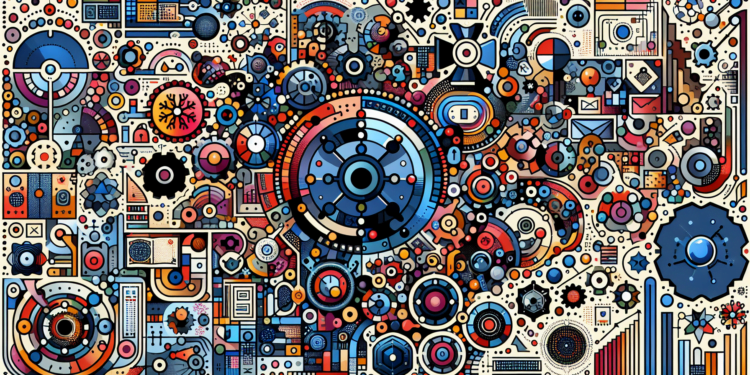In a specialized article directed at an audience with high intellectual ability and in a media outlet focused on technology or artificial intelligence topics, it is essential to offer depth and new insights on the subject at hand. To tackle the glossary in the context of Artificial Intelligence and Clustering, a way of writing that connects advanced theory with emerging practices is required, presenting a review of the latest advances in research and their applications.
Introduction to Clustering in Artificial Intelligence
Clustering is an unsupervised machine learning technique whose goal is to organize a set of objects into groups (or clusters) in such a way that objects within a group are more similar to each other compared to those belonging to different groups. This technique is key to understanding hidden patterns in large and heterogeneous data sets, and its relevance has grown in parallel with the exponential growth of data generated across multiple sectors.
Theoretical Foundations
Clustering is based on the notion of similarity and, to measure it, different metrics such as Euclidean distance, cosine similarity, Manhattan distance, and others are used. Each metric has its own benefits and limitations, and the choice depends on the nature of the problem and the type of data available.
We will examine the logic behind some of the most popular clustering algorithms:
- K-Means: One of the most well-known methods that seeks to minimize the variance within each cluster. It is necessary to define the number ‘k’ of clusters a priori.
- DBSCAN (Density-Based Spatial Clustering of Applications with Noise): This algorithm defines clusters as areas of high density separated by areas of low density and does not require the specification of a number of clusters.
- Hierarchical Clustering: Builds a hierarchy of clusters, either in an agglomerative (iteratively merging) or divisive (iteratively splitting) manner.
Advances and Recent Algorithms
The AI research community has developed new algorithms that address limitations of traditional methods, such as the ability to work with large volumes of data, flexibility with non-convex cluster shapes, and adaptability to real-time data evolution.
One of the recent approaches is the use of neural networks and deep learning techniques for clustering, such as autoencoders, which can identify complex and non-linear structures in data.
In addition, with the emergence of “clustering ensembles,” multiple clustering algorithms are combined to enhance the robustness and stability of the results.
Emerging Practical Applications
Clustering has applications in a variety of fields:
- In biology, for genetic analysis and gene expression.
- In marketing, to segment customers and tailor strategies.
- In social sciences, to identify natural groupings in populations.
- In cybersecurity, to detect suspicious activities and group similar attacks.
Moreover, with the rise of “Smart Cities,” clustering plays a fundamental role in organizing urban data sets and interpreting them for decision-making.
Comparison with Previous Work
A historical retrospective shows how clustering has evolved from simple methods to complex algorithms that today integrate deep learning. The progression has been marked by the desire to understand patterns in increasingly complex data sets.
The comparison with previous works not only demonstrates progress in terms of algorithms but also in the computing necessary to process large volumes of data and in the multidisciplinary interpretation of results.
Future Directions and Possible Innovations
Looking forward, we anticipate developments in clustering that will incorporate advances in techniques such as quantum computing and genetic algorithms. The interaction between clustering and other areas of artificial intelligence, like recommendation systems and natural language processing, is also promising.
A greater synergy with fields such as robotics is expected, where clustering can assist in perception and classification of the environment by robots.
Case Studies
To exemplify, consider the use of clustering in social network analysis. Algorithms have enabled the identification of communities within these platforms, improving understanding of social and informational dynamics.
Another case study is the use of clustering in personalized medicine. By grouping patients with similar clinical characteristics, it is possible to develop more effective and tailored treatments.
Conclusion
Clustering within artificial intelligence is an extremely powerful tool for discovering knowledge in large volumes of data, crossing disciplinary boundaries, and projecting future technological innovations. As we move towards an era of even greater data interconnectivity, clustering positions itself as a central pillar in analysis and in obtaining insights that would otherwise be overlooked.
The upcoming years will see a deepening in the versatility and efficiency of clustering, thanks to advances in hardware and algorithms, and greater integration with emerging areas of artificial intelligence. With the critical role data plays in all aspects of modern life, clustering will continue to be a key area of research and a driver of applied innovation.






















